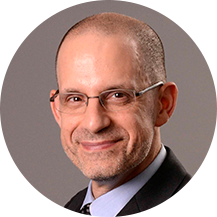Why Does Investing in Young Children Matter?

The first eight years of life are a time of remarkable intellectual, social, and emotional growth. The experiences children have during this time have the power to shape their health and well-being, both positively and negatively, for years to come.
Programs and policies reaching young children in need benefit them, their families, and—in the long run—their communities as well. Here, four EDC child development experts discuss what’s at stake when we talk about the importance of investing in young children.
A return on investment
Policymakers looking for reasons to invest in young children should examine a new study from Nobel Laureate economist James Heckman and his colleagues from the University of Chicago. Their research shows that early childhood programs that encourage linguistic, cognitive, and social-emotional development have a significant impact on children’s future education, health, and employment outcomes. They even quantified the impact. In the program they examined, every $1 dollar invested returned over $7 in long-term benefits.
This confirms what educators already knew: early, high-quality investments can help children turn the corner toward healthy development and learning. However, we must not be blind to the fact that all children do not enjoy equal access to these programs. Race, class, and culture all affect a family’s access, and too many children are still being left behind. As we continue to learn what works, we must also commit to expanding access to high-quality programs so that every child starts out on the right foot.
The toll of extreme poverty
Around the world, 267 million children in low- and middle-income countries live on less than $2 per day. They struggle with the challenges that poverty brings to growth, health, and learning. For these children, the availability of early childhood programs would be life changing.
Children who participate in early childhood programs grow up to be healthier—both physically and mentally—and better educated, with higher-paying jobs and lower rates of incarceration. And economically, both individuals and communities reap huge benefits. In fact, economists have calculated that increasing the preschool enrollment rate in sub-Saharan Africa to 59 percent would return between $28 and $37 for every $1 dollar invested.
Given such a huge return on investment, the question of whether to invest in early education programs becomes an economic one. And I would argue that they are well worth the cost, given the significant difference they make.
However, there’s a moral imperative, too. We should care that a quarter of a billion children may never get a chance to live healthy, productive lives because they are poor—and we should aspire to help them achieve better outcomes. Our lives are ultimately intertwined with the fortunes, and struggles, of others. The world is too small to pretend otherwise. In early childhood programming, we have the means to affect great change. Do we have the will?
The need to support families
In the first few years of life, children’s development is impacted by everything and everyone around them. So it’s distressing that so many young children struggle with mental health issues resulting from their early experiences. Approximately 9 to 14 percent of all children, from birth to age five, experience social and emotional problems that negatively affect their functioning and development. In fact, school expulsion rates among preschool children due to behavioral issues are three times higher than the rate for children in grade school. The long-term effects impact all of us. Prevention and early intervention are important and necessary to promote healthy, successful children.
What can we do? One idea is for doctors to integrate social and emotional screening more regularly in children’s appointments. Physicians should be asking questions about behavior. How does a child get along with others? How does he get his needs met? How does she deal with transitions? The answers to these basic questions enable physicians to evaluate risk early and to get the child and the family the help and support the child needs. We just have to make it the norm. Simple, early interventions can make a lifetime of difference.
Community partnerships work
Research has shown that children living in poverty start school less prepared than their peers from middle-income families—and that this early deficit is not easily overcome. A comprehensive approach to reversing the effects of poverty should begin at birth, with access to home visiting services for new parents. And it should extend through third grade, with high-quality preschool and elementary programs. Communities that invest in educational programs for longer achieve even greater results.
This approach has worked in Union City, New Jersey, and Montgomery County, Maryland, among other places. These two communities created partnerships between school districts, preschools, and other early childhood organizations; invested in curriculum and professional development across the early grades; and set family engagement as a priority. These kinds of partnerships are now proliferating across the country and for good reason: they represent a powerful strategy for improving outcomes for low-income children.



